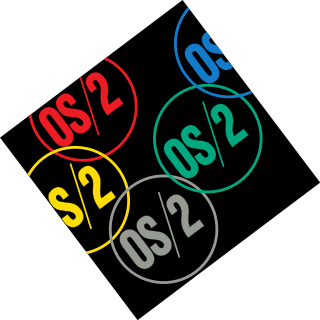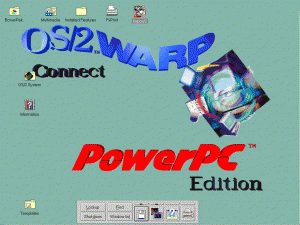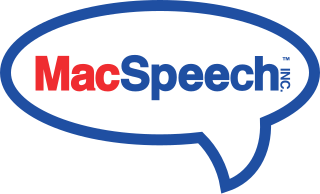
OS/2 is a series of computer operating systems, initially created by Microsoft and IBM under the leadership of IBM software designer Ed Iacobucci. As a result of a feud between the two companies over how to position OS/2 relative to Microsoft's new Windows 3.1 operating environment, the two companies severed the relationship in 1992 and OS/2 development fell to IBM exclusively. The name stands for "Operating System/2", because it was introduced as part of the same generation change release as IBM's "Personal System/2 (PS/2)" line of second-generation personal computers. The first version of OS/2 was initially released in December 1987, and newer versions were released until December 2001.

A personal digital assistant (PDA) is a multi-purpose mobile device which functions as a personal information manager. PDAs have been mostly displaced by the widespread adoption of highly capable smartphones, in particular those based on iOS and Android, and thus saw a rapid decline in use after 2007.

Handwriting recognition (HWR), also known as handwritten text recognition (HTR), is the ability of a computer to receive and interpret intelligible handwritten input from sources such as paper documents, photographs, touch-screens and other devices. The image of the written text may be sensed "off line" from a piece of paper by optical scanning or intelligent word recognition. Alternatively, the movements of the pen tip may be sensed "on line", for example by a pen-based computer screen surface, a generally easier task as there are more clues available. A handwriting recognition system handles formatting, performs correct segmentation into characters, and finds the most possible words.
PlainTalk is the collective name for several speech synthesis (MacinTalk) and speech recognition technologies developed by Apple Inc.

Workplace OS is IBM's ultimate operating system prototype of the 1990s. It is the product of an exploratory research program in 1991 which yielded a design called the Grand Unifying Theory of Systems (GUTS), proposing to unify the world's systems as generalized personalities cohabitating concurrently upon a universally sophisticated platform of object-oriented frameworks upon one microkernel. Developed in collaboration with Taligent and its Pink operating system imported from Apple via the AIM alliance, the ambitious Workplace OS was intended to improve software portability and maintenance costs by aggressively recruiting all operating system vendors to convert their products into Workplace OS personalities. In 1995, IBM reported that "Nearly 20 corporations, universities, and research institutes worldwide have licensed the microkernel, laying the foundation for a completely open microkernel standard." At the core of IBM's new unified strategic direction for the entire company, the project was intended also as a bellwether toward PowerPC hardware platforms, to compete with the Wintel duopoly.

Microsoft Office XP is an office suite which was officially revealed in July 2000 by Microsoft for the Windows operating system. Office XP was released to manufacturing on March 5, 2001, and was later made available to retail on May 31, 2001, less than five months prior to the release of Windows XP. It is the successor to Office 2000 and the predecessor of Office 2003. A Mac OS X equivalent, Microsoft Office v. X was released on November 19, 2001.

MacSpeech, Inc. was a New Hampshire-based technology company that produced software-based speech recognition and voice dictation solutions for the Apple ecosystem. The company's products included iListen, MacSpeech Dictate, MacSpeech Dictate Medical, MacSpeech Dictate Legal, MacSpeech Dictate International, and MacSpeech Scribe. On February 12, 2010, Nuance Communications, Inc. acquired MacSpeech.

Dragon NaturallySpeaking is a speech recognition software package developed by Dragon Systems of Newton, Massachusetts, which was acquired in turn by Lernout & Hauspie Speech Products, Nuance Communications, and Microsoft. It runs on Windows personal computers. Version 15, which supports 32-bit and 64-bit editions of Windows 7, 8 and 10, was released in August 2016.
A voice-user interface (VUI) enables spoken human interaction with computers, using speech recognition to understand spoken commands and answer questions, and typically text to speech to play a reply. A voice command device is a device controlled with a voice user interface.
DragonDictate, Dragon Dictate, or Dragon for Mac is proprietary speech recognition software. The older program, DragonDictate, was originally developed by Dragon Systems for Microsoft Windows, and was replaced by Dragon NaturallySpeaking for Windows. It was later acquired by Nuance Communications. Dragon Dictate for Mac 2.0 is supported only on Mac OS X 10.6. Nuance's other products for Mac include MacSpeech Scribe.
The Speech Application Programming Interface or SAPI is an API developed by Microsoft to allow the use of speech recognition and speech synthesis within Windows applications. To date, a number of versions of the API have been released, which have shipped either as part of a Speech SDK or as part of the Windows OS itself. Applications that use SAPI include Microsoft Office, Microsoft Agent and Microsoft Speech Server.
SCRIPT, any of a series of text markup languages starting with Script under Control Program-67/Cambridge Monitor System (CP-67/CMS) and Script/370 under Virtual Machine Facility/370 (VM/370) and the Time Sharing Option (TSO) of OS/VS2; the current version, SCRIPT/VS, is part of IBM's Document Composition Facility (DCF) for IBM z/VM and z/OS systems. SCRIPT was developed for CP-67/CMS by Stuart Madnick at MIT, succeeding CTSS RUNOFF.

Pen computing refers to any computer user-interface using a pen or stylus and tablet, over input devices such as a keyboard or a mouse.
As of the early 2000s, several speech recognition (SR) software packages exist for Linux. Some of them are free and open-source software and others are proprietary software. Speech recognition usually refers to software that attempts to distinguish thousands of words in a human language. Voice control may refer to software used for communicating operational commands to a computer.

Windows Speech Recognition (WSR) is speech recognition developed by Microsoft for Windows Vista that enables voice commands to control the desktop user interface, dictate text in electronic documents and email, navigate websites, perform keyboard shortcuts, and operate the mouse cursor. It supports custom macros to perform additional or supplementary tasks.
MacSpeech Scribe is speech recognition software for Mac OS X designed specifically for transcription of recorded voice dictation. It runs on Mac OS X 10.6 Snow Leopard. The software transcribes dictation recorded by an individual speaker. Typically, the speaker will record their dictation using a digital recording device such as a handheld digital recorder, mobile smartphone, or desktop or laptop computer with a suitable microphone. MacSpeech Scribe supports specific audio file formats for recorded dictation: .aif, .aiff, .wav, .mp4, .m4a, and .m4v.
Tazti is a speech recognition software package developed and sold by Voice Tech Group, Inc. for Windows personal computers. The most recent package is version 3.2, which supports Windows 10, Windows 8.1, Windows 8 and Windows 7 64-bit editions. Earlier versions of Tazti supported Windows Vista and Windows XP. PC video game play by voice, controlling PC applications and programs by voice and creating speech commands to trigger a browser to open web pages, or trigger the Windows operating system to open files, folders or programs are Tazti's primary features. Earlier versions of Tazti included a lite Dictation feature that is eliminated from the latest version.

Braina is a virtual assistant and speech-to-text dictation application for Microsoft Windows developed by Brainasoft. Braina uses natural language interface, speech synthesis, and speech recognition technology to interact with its users and allows them to use natural language sentences to perform various tasks on a computer in most languages of the world. The name Braina is a short form of “Brain Artificial”.
Michael Phillips is the CEO and co-founder of Sense Labs and a pioneer in machine learning, including mobile speech recognition and text-to-speech technology.









